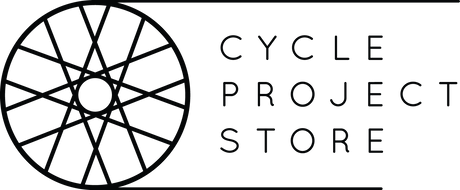Cannondale back in the 90s and early 2000s, was producing brilliant alloy bikes and was famous for their sponsoring of Mario Cippolini's Saeco team early on.
Credit : Logo World
This Cannondale CAAD 7 was produced for the market in the year 2003 and it was also the second year that Cannondale adopted Optimo after first launching it in 2002. What does the Optimo on Cannondale means?
The Optimo you saw on some Cannondale frames meant that it was built with a special aluminum that was developed from a partnership with an american alloy company named Alcoa. The Optimo alloy was developed after a lengthy duration fo 18 month which explained the creation of the specific elements found in Optimo. Cannondale was the only exclusive bicycle company in the bicycle industry that has exclusive use of this special alloy which has superior properties to the alloy 6061, 6066, and 6069. Optimo's mix has more silicon and less magnesium than 6061, leading to higher tensile strength and elongation.
The recent years have seen an increase in demand for the old (well not so old) Cannondale CAAD frames, notably the CAAD 7. This CAAD 7 Optimo R5000 features a Kevlar Carbon fork which is extremely beautiful to look at. The frame is also finished off in manner where it seems to be black satin that feels very raw when in contact.
The owner wanted to keep things simple while retaining the usage of black components and mostly alloy components aside from seatpost and handlebar for comfort reasons. The gumwall Veloflex Master tires gave a nice contrast with the blackout frameset which draws a really nice aesthetic balance overall.
A low profile alloy wheelset was chosen as the bike back in the catalogue then, was with shallow wheelset and as the bike was intended for overseas ride, the DT Swiss Oxy DiCut wheelset was alluring due to the black ceramic coating of the black lining but as well as the whole package of the wheelset that comes with a DT Swiss 240 hubset in black as well.
Another interesting part on this build was actually the crankset. It features the original Si Hollogram Crank that is finished off in silver and as per the cannondale catalogue in 2003! What a match! The crankset weight itself was astonishing given that it was produced in 2002 which several crankset options in the market today, should be ashamed of. To match the crankset, an NOS MK V Cannondale Hollogram chainring was sourced and it is safe to that Cannondale was already producing really amazing products.
One interesting note was that the higher spec-ed frames by Cannondale back in the days came with BB30 Bottom Bracket shell as compared to the BSA that were found in the lower tier below the CAAD R1000 series.
With the Team Saeco's bikes back in the days using Campagnolo groupset, this R5000 features a modern Campagnolo Chorus 11 Speed groupset and the aesthetics of the shifter, rear derailleur and brake calipers matches really well with this particular frameset.
The previous edition of CAADs before the CAAD 10 are brilliant choices for one who wants to add an alloy bike to their steed while not costing a huge fortune. These alloy bikes are also often the best option to accompany you on your bike trips and without any worry for damages during transportation or having concerns with full integration setup. Another best part of the old CAADs? They were all handmade in USA.
Have an old Cannondale that you want to get it built up?
BUILD SPEC
| Frameset |
Cannondale CAAD 7 Optimo R5000si |
| Headset |
Campagnolo |
| Wheelset |
DT Swiss PR 1400 Oxy Dicut |
| Tyres |
Veloflex Master |
| Groupset |
Campagnolo Chorus Mechanical Rim |
| Crankset |
Cannondale Hollogram Si with MK V Chainring |
| Handlebar |
Deda Superleggero RS |
| Stem |
Deda Superleggera RS |
| Seatpost |
Deda Superleggero RS |
| Saddle |
Brooks C13 Cambium |
| Grips |
God & Famous Debossed Bartape |















